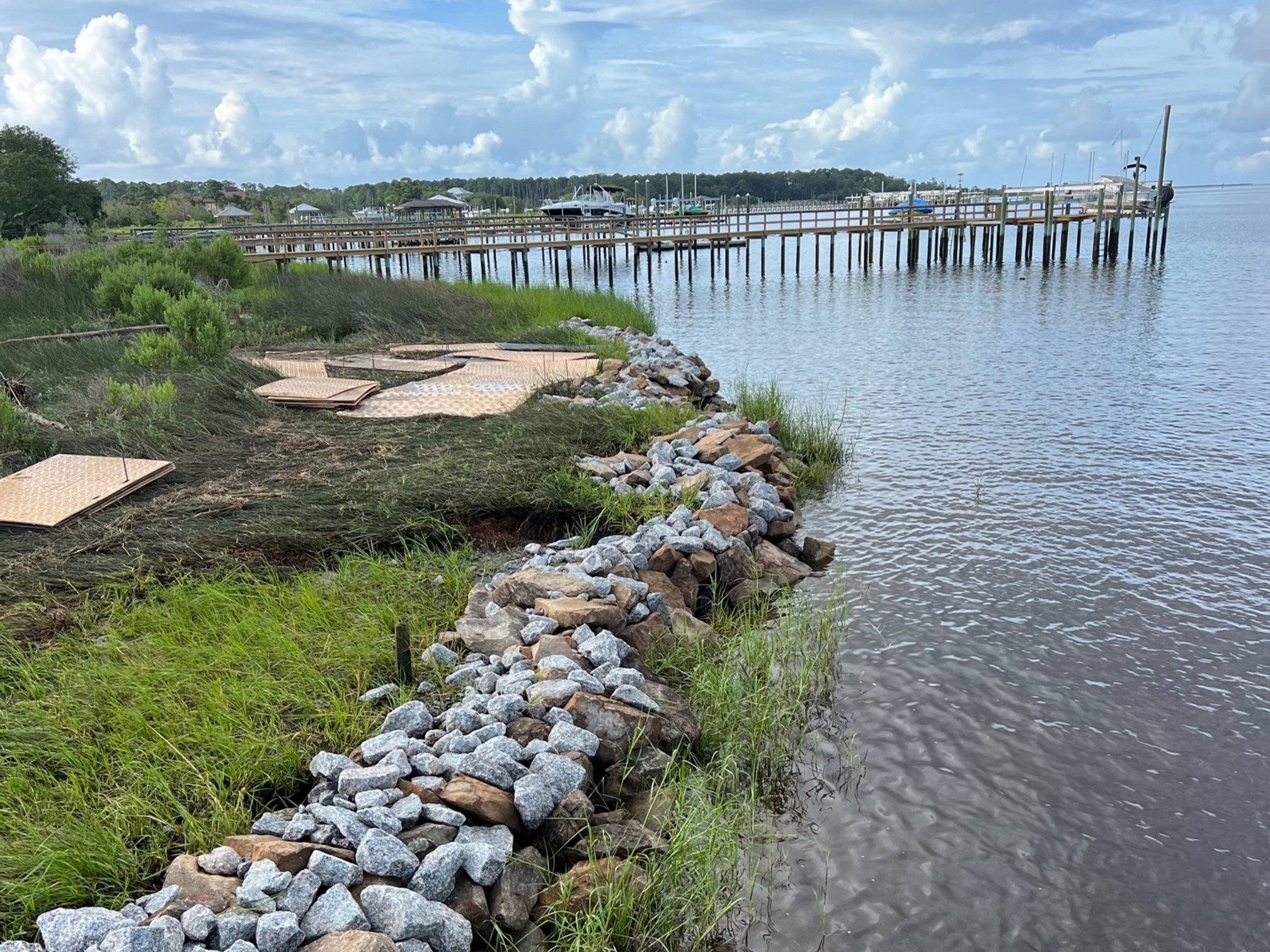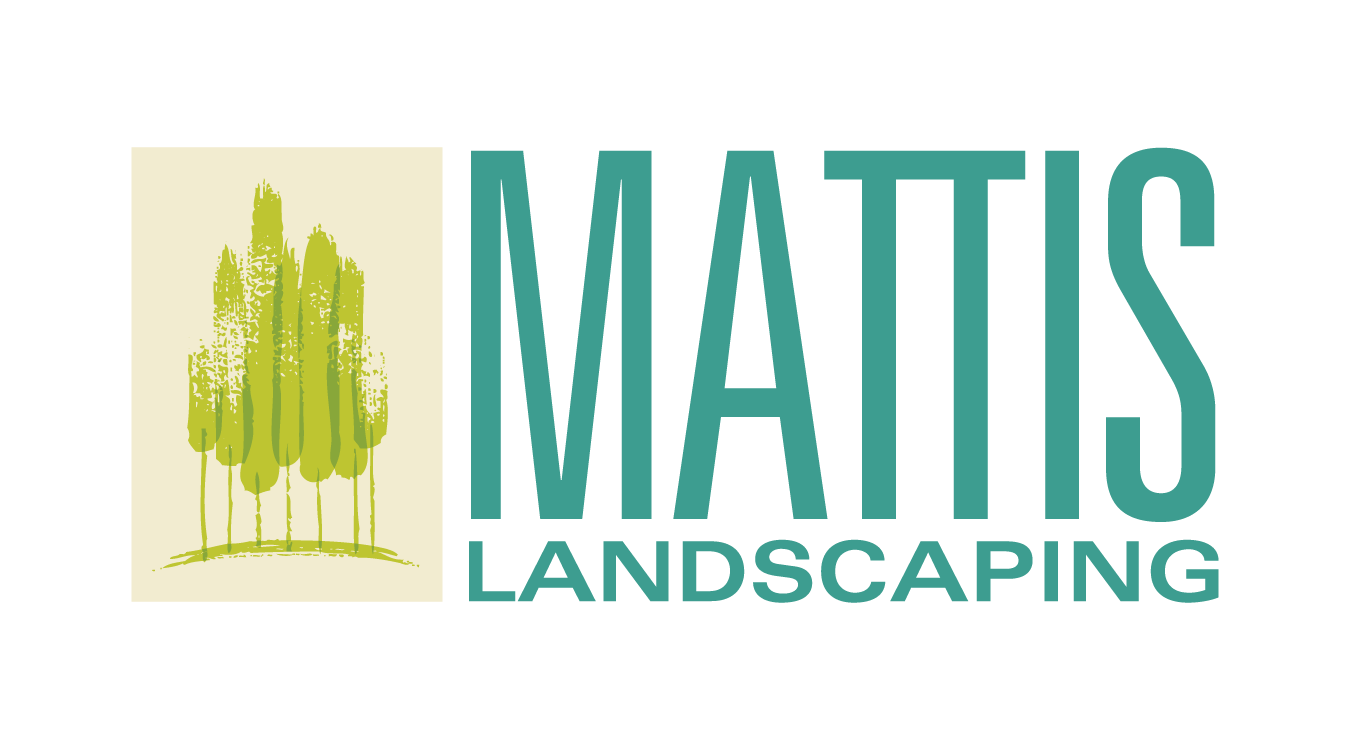
Shoreline stabilization is the use of engineered structures or vegetation to protect a shoreline from erosion.
Erosion Solutions:
Riprap Sills, Revetments, & Bulkheads
Estuarine shorelines are dynamic and often experience erosion. Erosion occurs by storms, boat wakes, and tidal currents. As coastal populations encroach on shorelines, we must balance the need to protect the public from erosion with the need to maintain the integrity of the natural ecosystem.
Below are various shoreline stabilization methods allowable in North Carolina and installed by Mattis Landscaping. A few of the methods below, such as vegetation, marsh revetments and marsh sills, can actually improve marine habitat rather than destroy it.
Shoreline
Stabilization
Methods
At Mattis Landscaping we work with our clients to plan and design the erosion solution around existing conditions and CAMA guidelines. Some of the projects we typically install are:
-
Revetments are a shore-parallel, sloping structure compiled or built against a marsh escarpment to protect the marsh wetland roots from being undermined. Placing riprap or stone on the waterward edge of the marsh helps to stabilize or reestablish the marsh vegetation. Marsh grasses dissipate wave energy and wave height through friction and drag, and thus help to reduce erosion further inland (usually on the high ground). Marsh vegetation also increases the marsh habitat and provides food for the lower organisms such as algae and seaweeds, finfish and shellfish, mammals and shorebirds.
-
Riprap Revetment is a shore-parallel, sloping structure compiled or built against a bank/escarpment to protect it from erosion while absorbing wave energy. Revetments are typically constructed on a 1 Vertical: 2 Horizontal slope. Riprap/Stone can move during storms or wave action and as such the stone used needs to be heavy enough to remain in place. Revetments are very long lasting, durable structures which usually do not need any maintenance after construction. Revetments, when designed to, can withstand a wide range of wave energies from very little to large wave action. Although revetments cause a minimal loss of soft bottom habitat, they cause less habitat destruction and loss than bulkheads and also create fisheries habitats.
-
Riprap Bulkhead is any shore-parallel vertical structure designed to prevent erosion, overtopping, flooding, or sliding of the land. Bulkheads are usually placed along an eroding bank or escarpment to hold back the land from the water and prevent erosion. Bulkheads are a long lasting, durable structure that can stand up to moderate to high wave energy; but they also prevent the natural migration of wetland vegetation.
-
A sill is a shore-parallel, wood or rock structure that is designed to protect existing or newly planted wetland vegetation. A sill is placed offshore of existing marsh to help reduce the erosion of the waterward edge (escarpment). If there is no marsh already on the property, a sill is placed just offshore of where marsh might grow and be planted. The sill helps to protect the marsh by dissipating enough wave energy so that the marsh can establish. Once established, the marsh grasses dissipate wave energy and wave height through friction and drag, and thus help to reduce erosion further inland (usually on the high ground). Marsh vegetation also increases the marsh habitat and provides food for the lower organisms such as algae and seaweeds, finfish and shellfish, mammals and shorebirds.
-
At Mattis Landscaping, we specialize in comprehensive beach renourishment and emergency shoreline mitigation services to protect and restore coastal areas. Our experienced team is equipped with bulldozers and heavy machinery to efficiently handle large-scale beach renourishment projects, replenishing sand and stabilizing your shoreline.
In addition to renourishment, we provide expert sandbag installation to safeguard your property from erosion and storm surge. Whether you need preventive measures or emergency mitigation, we’re here to ensure your beach remains resilient and protected.
Contact us today to learn more about our beach renourishment and sandbag services!
-
Beach Bulldozing Services
At Mattis Landscaping, we understand the critical need to protect coastal properties from the relentless forces of nature. For property owners facing erosion or storm damage, beach bulldozing can provide a practical solution by creating a temporary dune or berm to shield structures or stabilize foundations.
At Mattis Landscaping, we bring expertise, efficiency, and a commitment to protecting your investment while respecting coastal ecosystems. Contact us to learn more about our beach bulldozing services and how we can help safeguard your property.
Mattis Landscaping works with CAMA to apply for the following types of Permits:
General Permit for Construction of Bulkheads and Riprap Revetments for Shoreline Protection in Estuarine and Public Trust Waters and Ocean Hazard Areas.
General Permits for Placement of Riprap Marsh Revetments for Wetland Protection in Estuarine and Public Trust Waters.
General Permits for the Construction of Riprap Marsh Sills for Wetland Protection in Estuarine and Public Trust Waters.
Emergency Permits for the Reconstruction of Primary or Frontal Dune Systems. The maintenance excavation of existing canals, basins, channels, or ditches that have been damaged or destroyed by hurricanes or tropical storms.




